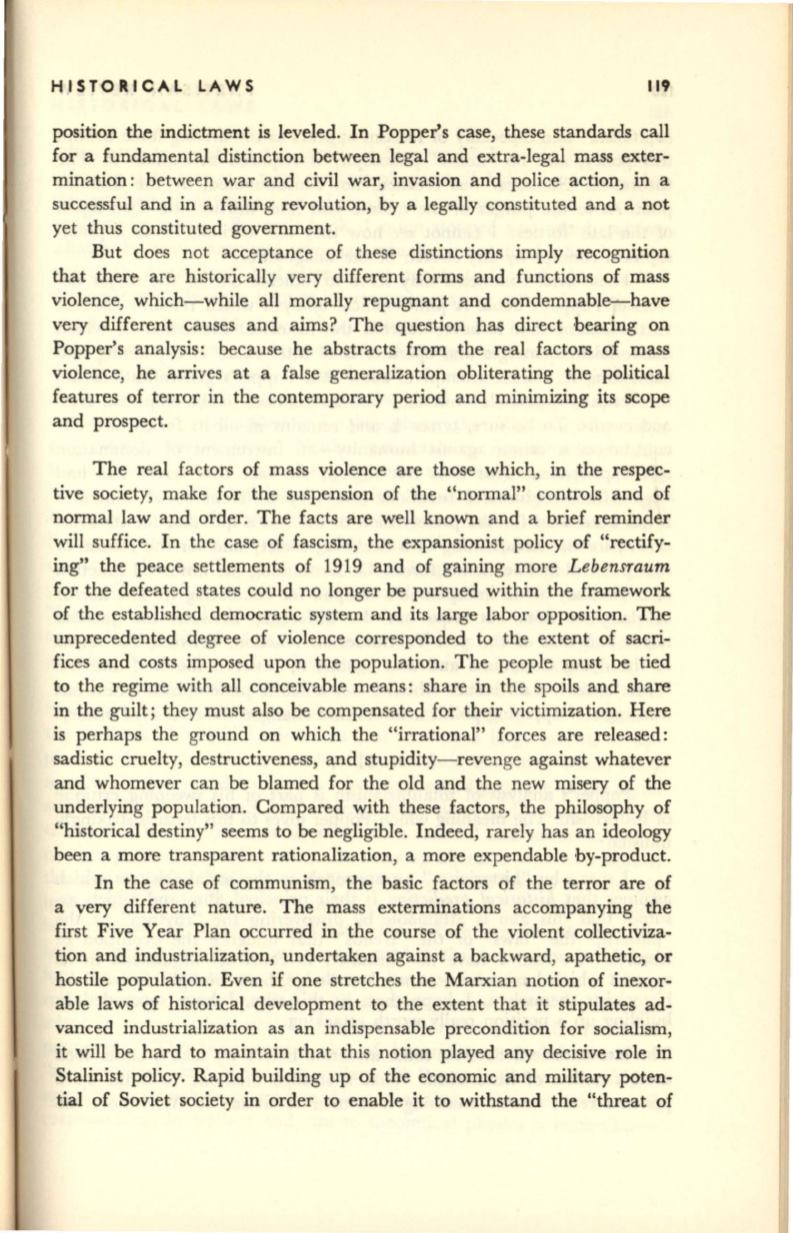
HISTORICAL LAWS
119
position the indictment is leveled. In Popper's case, these standards call
for a fundamental distinction between legal and extra-legal mass exter–
mination: between war and civil war, invasion and police action, in a
successful and in a failing revolution, by a legally constituted and a not
yet thus constituted government.
But does not acceptance of these distinctions imply recognition
that there are historically very different forms and functions of mass
violence, which-while all morally repugnant and condemnable-have
very different causes and aims? The question has direct bearing on
Popper's analysis: because he abstracts from the real factors of mass
violence, he arrives at a false generalization obliterating the political
features of terror in the contemporary period and minimizing its scope
and prospect.
The real factors of mass violence are those which, in the respec–
tive society, make for the suspension of the "normal" controls and of
normal law and order. The facts are well known and a brief reminder
will suffice. In the case of fascism, the expansionist policy of "rectify–
ing" the peace settlements of 1919 and of gaining more
Lebensraum
for the defeated states could no longer be pursued within the framework
of the established democratic system and its large labor opposition. The
unprecedented degree of violence corresponded to the extent of sacri–
fices and costs imposed upon the population. The people must be tied
to the regime with all conceivable means: share in the spoils and share
in the guilt; they must also be compensated for their victimization. Here
is perhaps the ground on which the "irrational" forces are released:
sadistic cruelty, destructiveness, and stupidity-revenge against whatever
and whomever can be blamed for the old and the new misery of the
underlying population. Compared with these factors, the philosophy of
"historical destiny" seems to be negligible. Indeed, rarely has an ideology
been a more transparent rationalization, a more expendable by-product.
In the case of communism, the basic factors of the terror are of
a very different nature. The mass exterminations accompanying the
first Five Year Plan occurred in the course of the violent collectiviza–
tion and industrialization, undertaken against a backward, apathetic, or
hostile population. Even if one stretches the Marxian notion of inexor–
able laws of historical development to the extent that it stipulates ad–
vanced industrialization as an indispensable precondition for socialism,
it will be hard to maintain that this notion played any decisive role in
Stalinist policy. Rapid building up of the economic and military poten–
tial of Soviet society in order to enable it to withstand the "threat of


